185 posts
Latest Posts by ocrim1967 - Page 5








(Source)








(Source)
Puppies Make Me Happy




















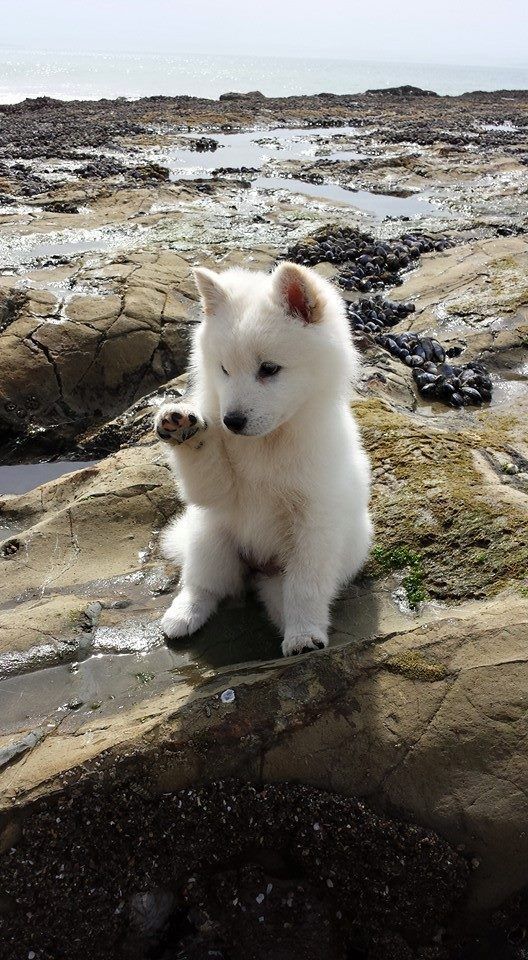
Scientists push back against Harvard 'alien spacecraft' theory

This photo released by the European Southern Observatory on November 20, 2017 shows an artist’s impression of the first interstellar object known to enter our solar system: ‘Oumuamua
A scientific paper led by two researchers at Harvard University made a splash this week by claiming that a cigar-shaped rock zooming through our solar system may have been sent by aliens.
The researchers noted in a pre-print of the article that it was an “exotic scenario,” but that “Oumuamua may be a fully operational probe sent intentionally to Earth vicinity by an alien civilization.”
Oumuamua, the first interstellar object known to enter our solar system, accelerated faster away from the Sun than expected, hence the notion that some kind of artificial sail that runs on sunlight—known as a light sail—may have helped push it through space.
“Currently there is an unexplained phenomena, namely, the excess acceleration of Oumuamua, which we show may be explained by the force of radiation pressure from the sun,” co-author and Harvard astrophysicist Shmuel Bialy told AFP via email Tuesday.
“However this requires the body to have a very large surface and be very thin, which is not encountered in nature.”
Their suggestion of an alien force at work went viral.
But other astronomy experts aren’t buying it.
“Like most scientists, I would love there to be convincing evidence of alien life, but this isn’t it,” said Alan Fitzsimmons, an astrophysicist at Queens University, Belfast.
“It has already been shown that its observed characteristics are consistent with a comet-like body ejected from another star system,” he told AFP.
“And some of the arguments in this study are based on numbers with large uncertainties.”
Read more ~ phys.org

A photo released by the European Space Agency on June 27, 2018 shows an artist’s impression of ‘Oumuamua Editor’s note: Any cometary outgassing required to provide acceleration would have been detectable. None detected. What kills the alien probe theory for me is it’s velocity. Fast enough to buzz through the solar system without being snared by the sun but WAY too slow for practical interstellar travel although it’s trajectory put it on a nice path for exploration.

Credit : NASA - https://www.nasa.gov/feature/jpl/small-asteroid-or-comet-visits-from-beyond-the-solar-system, Public Domain, https://commons.wikimedia.org/w/index.php?curid=64030370
First look at the 2024 total solar eclipse

The path of the April 8, 2024 total solar eclipse begins in the United States in Texas and ends in Maine. Google, INEGI
…The length of totality varies from one eclipse to the next. The reason is that Earth is not always the same distance from the Sun, and the Moon is not always the same distance from Earth. The Earth-Sun distance varies by 3 percent and the Moon-Earth distance by 12 percent. The result is that the maximum duration of totality from 2000 b.c. to a.d. 3000 is 7 minutes, 29 seconds. (That eclipse will occur July 16, 2186, so don’t get too excited for it.)
While the maximum length of totality during the April 8, 2024, eclipse won’t be that long, it’s still a worthy chunk of time: 4 minutes, 28 seconds — 67 percent longer than the one in 2017. And as with that one, everyone in the contiguous U.S. will see at least a partial eclipse. In fact, as long as you have clear skies on eclipse day, the Moon will cover at least 16.15 percent of the Sun’s brilliant surface. That minimum comes at Tatoosh Island, a tiny speck of land west of Neah Bay, Washington. And although our satellite covering any part of the Sun’s disk sounds cool, you need to aim higher.
Read more ~ Astronomy Magazine Posted by Michael Bakich on Sunday, September 23, 2018
The Kepler space telescope has shown us our galaxy is teeming with planets — and other surprises

The Kepler space telescope has taught us there are so many planets out there, they outnumber even the stars. Here is a sample of these wondrous, weird and unexpected worlds (and other spectacular objects in space) that Kepler has spotted with its “eye” opened to the heavens.
Kepler has found that double sunsets really do exist.

Yes, Star Wars fans, the double sunset on Tatooine could really exist. Kepler discovered the first known planet around a double-star system, though Kepler-16b is probably a gas giant without a solid surface.
Kepler has gotten us closer to finding planets like Earth.

Nope. Kepler hasn’t found Earth 2.0, and that wasn’t the job it set out to do. But in its survey of hundreds of thousands of stars, Kepler found planets near in size to Earth orbiting at a distance where liquid water could pool on the surface. One of them, Kepler-62f, is about 40 percent bigger than Earth and is likely rocky. Is there life on any of them? We still have a lot more to learn.
This sizzling world is so hot iron would melt!

One of Kepler’s early discoveries was the small, scorched world of Kepler-10b. With a year that lasts less than an Earth day and density high enough to imply it’s probably made of iron and rock, this “lava world” gave us the first solid evidence of a rocky planet outside our solar system.
If it’s not an alien megastructure, what is this oddly fluctuating star?

When Kepler detected the oddly fluctuating light from “Tabby’s Star,” the internet lit up with speculation of an alien megastructure. Astronomers have concluded it’s probably an orbiting dust cloud.
Kepler caught this dead star cannibalizing its planet.

What happens when a solar system dies? Kepler discovered a white dwarf, the compact corpse of a star in the process of vaporizing a planet.
These Kepler planets are more than twice the age of our Sun!

The five small planets in Kepler-444 were born 11 billion years ago when our galaxy was in its youth. Imagine what these ancient planets look like after all that time?
Kepler found a supernova exploding at breakneck speed.

This premier planet hunter has also been watching stars explode. Kepler recorded a sped-up version of a supernova called a “fast-evolving luminescent transit” that reached its peak brightness at breakneck speed. It was caused by a star spewing out a dense shell of gas that lit up when hit with the shockwave from the blast.
* All images are artist illustrations.
Make sure to follow us on Tumblr for your regular dose of space: http://nasa.tumblr.com


Comet McNaught next to the dome of the NTT on La Silla. The picture was taken in January 2007.
Credit: ESO/H.H.Heyer

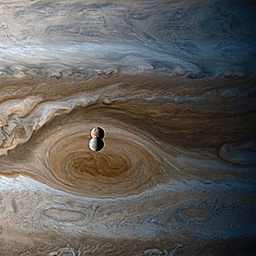
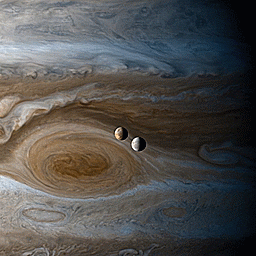
Created using still images taken by the Cassini spacecraft during it’s flyby of Jupiter and while at Saturn. Shown is Io and Europa over Jupiter’s Great Red Spot.
NASA/JPL-Caltech/SSI/CICLOPS/Kevin M. Gill
Frozen: Ice on Earth and Well Beyond

Icy Hearts: A heart-shaped calving front of a glacier in Greenland (left) and Pluto’s frozen plains (right). Credits: NASA/Maria-Jose Viñas and NASA/APL/SwRI
From deep below the soil at Earth’s polar regions to Pluto’s frozen heart, ice exists all over the solar system…and beyond. From right here on our home planet to moons and planets millions of miles away, we’re exploring ice and watching how it changes. Here’s 10 things to know:
1. Earth’s Changing Ice Sheets

An Antarctic ice sheet. Credit: NASA
Ice sheets are massive expanses of ice that stay frozen from year to year and cover more than 6 million square miles. On Earth, ice sheets extend across most of Greenland and Antarctica. These two ice sheets contain more than 99 percent of the planet’s freshwater ice. However, our ice sheets are sensitive to the changing climate.
Data from our GRACE satellites show that the land ice sheets in both Antarctica and Greenland have been losing mass since at least 2002, and the speed at which they’re losing mass is accelerating.
2. Sea Ice at Earth’s Poles

Earth’s polar oceans are covered by stretches of ice that freezes and melts with the seasons and moves with the wind and ocean currents. During the autumn and winter, the sea ice grows until it reaches an annual maximum extent, and then melts back to an annual minimum at the end of summer. Sea ice plays a crucial role in regulating climate – it’s much more reflective than the dark ocean water, reflecting up to 70 percent of sunlight back into space; in contrast, the ocean reflects only about 7 percent of the sunlight that reaches it. Sea ice also acts like an insulating blanket on top of the polar oceans, keeping the polar wintertime oceans warm and the atmosphere cool.
Some Arctic sea ice has survived multiple years of summer melt, but our research indicates there’s less and less of this older ice each year. The maximum and minimum extents are shrinking, too. Summertime sea ice in the Arctic Ocean now routinely covers about 30-40 percent less area than it did in the late 1970s, when near-continuous satellite observations began. These changes in sea ice conditions enhance the rate of warming in the Arctic, already in progress as more sunlight is absorbed by the ocean and more heat is put into the atmosphere from the ocean, all of which may ultimately affect global weather patterns.
3. Snow Cover on Earth

Snow extends the cryosphere from the poles and into more temperate regions.
Snow and ice cover most of Earth’s polar regions throughout the year, but the coverage at lower latitudes depends on the season and elevation. High-elevation landscapes such as the Tibetan Plateau and the Andes and Rocky Mountains maintain some snow cover almost year-round. In the Northern Hemisphere, snow cover is more variable and extensive than in the Southern Hemisphere.
Snow cover the most reflective surface on Earth and works like sea ice to help cool our climate. As it melts with the seasons, it provides drinking water to communities around the planet.
4. Permafrost on Earth

Tundra polygons on Alaska’s North Slope. As permafrost thaws, this area is likely to be a source of atmospheric carbon before 2100. Credit: NASA/JPL-Caltech/Charles Miller
Permafrost is soil that stays frozen solid for at least two years in a row. It occurs in the Arctic, Antarctic and high in the mountains, even in some tropical latitudes. The Arctic’s frozen layer of soil can extend more than 200 feet below the surface. It acts like cold storage for dead organic matter – plants and animals.
In parts of the Arctic, permafrost is thawing, which makes the ground wobbly and unstable and can also release those organic materials from their icy storage. As the permafrost thaws, tiny microbes in the soil wake back up and begin digesting these newly accessible organic materials, releasing carbon dioxide and methane, two greenhouse gases, into the atmosphere.
Two campaigns, CARVE and ABoVE, study Arctic permafrost and its potential effects on the climate as it thaws.
5. Glaciers on the Move

Did you know glaciers are constantly moving? The masses of ice act like slow-motion rivers, flowing under their own weight. Glaciers are formed by falling snow that accumulates over time and the slow, steady creep of flowing ice. About 10 percent of land area on Earth is covered with glacial ice, in Greenland, Antarctica and high in mountain ranges; glaciers store much of the world’s freshwater.
Our satellites and airplanes have a bird’s eye view of these glaciers and have watched the ice thin and their flows accelerate, dumping more freshwater ice into the ocean, raising sea level.
6. Pluto’s Icy Heart

The nitrogen ice glaciers on Pluto appear to carry an intriguing cargo: numerous, isolated hills that may be fragments of water ice from Pluto’s surrounding uplands. NASA/Johns Hopkins University Applied Physics Laboratory/Southwest Research Institute
Pluto’s most famous feature – that heart! – is stone cold. First spotted by our New Horizons spacecraft in 2015, the heart’s western lobe, officially named Sputnik Planitia, is a deep basin containing three kinds of ices – frozen nitrogen, methane and carbon monoxide.
Models of Pluto’s temperatures show that, due the dwarf planet’s extreme tilt (119 degrees compared to Earth’s 23 degrees), over the course of its 248-year orbit, the latitudes near 30 degrees north and south are the coldest places – far colder than the poles. Ice would have naturally formed around these latitudes, including at the center of Sputnik Planitia.
New Horizons also saw strange ice formations resembling giant knife blades. This “bladed terrain” contains structures as tall as skyscrapers and made almost entirely of methane ice, likely formed as erosion wore away their surfaces, leaving dramatic crests and sharp divides. Similar structures can be found in high-altitude snowfields along Earth’s equator, though on a very different scale.
7. Polar Ice on Mars

This image, combining data from two instruments aboard our Mars Global Surveyor, depicts an orbital view of the north polar region of Mars. Credit: NASA/JPL-Caltech/MSSS
Mars has bright polar caps of ice easily visible from telescopes on Earth. A seasonal cover of carbon dioxide ice and snow advances and retreats over the poles during the Martian year, much like snow cover on Earth.

This animation shows a side-by-side comparison of CO2 ice at the north (left) and south (right) Martian poles over the course of a typical year (two Earth years). This simulation isn’t based on photos; instead, the data used to create it came from two infrared instruments capable of studying the poles even when they’re in complete darkness. This data were collected by our Mars Reconnaissance Orbiter, and Mars Global Surveyor. Credit: NASA/JPL-Caltech
During summertime in the planet’s north, the remaining northern polar cap is all water ice; the southern cap is water ice as well, but remains covered by a relatively thin layer of carbon dioxide ice even in summertime.
Scientists using radar data from our Mars Reconnaissance Orbiter found a record of the most recent Martian ice age in the planet’s north polar ice cap. Research indicates a glacial period ended there about 400,000 years ago. Understanding seasonal ice behavior on Mars helps scientists refine models of the Red Planet’s past and future climate.
8. Ice Feeds a Ring of Saturn

Wispy fingers of bright, icy material reach tens of thousands of kilometers outward from Saturn’s moon Enceladus into the E ring, while the moon’s active south polar jets continue to fire away. Credit: NASA/JPL/Space Science Institute
Saturn’s rings and many of its moons are composed of mostly water ice – and one of its moons is actually creating a ring. Enceladus, an icy Saturnian moon, is covered in “tiger stripes.” These long cracks at Enceladus’ South Pole are venting its liquid ocean into space and creating a cloud of fine ice particles over the moon’s South Pole. Those particles, in turn, form Saturn’s E ring, which spans from about 75,000 miles (120,000 kilometers) to about 260,000 miles (420,000 kilometers) above Saturn’s equator. Our Cassini spacecraft discovered this venting process and took high-resolution images of the system.

Jets of icy particles burst from Saturn’s moon Enceladus in this brief movie sequence of four images taken on Nov. 27, 2005. Credit: NASA/JPL/Space Science Institute
9. Ice Rafts on Europa

View of a small region of the thin, disrupted, ice crust in the Conamara region of Jupiter’s moon Europa showing the interplay of surface color with ice structures. Credit: NASA/JPL/University of Arizona
The icy surface of Jupiter’s moon Europa is crisscrossed by long fractures. During its flybys of Europa, our Galileo spacecraft observed icy domes and ridges, as well as disrupted terrain including crustal plates that are thought to have broken apart and “rafted” into new positions. An ocean with an estimated depth of 40 to 100 miles (60 to 150 kilometers) is believed to lie below that 10- to 15-mile-thick (15 to 25 km) shell of ice.
The rafts, strange pits and domes suggest that Europa’s surface ice could be slowly turning over due to heat from below. Our Europa Clipper mission, targeted to launch in 2022, will conduct detailed reconnaissance of Europa to see whether the icy moon could harbor conditions suitable for life.
10. Crater Ice on Our Moon

The image shows the distribution of surface ice at the Moon’s south pole (left) and north pole (right), detected by our Moon Mineralogy Mapper instrument. Credit: NASA
In the darkest and coldest parts of our Moon, scientists directly observed definitive evidence of water ice. These ice deposits are patchy and could be ancient. Most of the water ice lies inside the shadows of craters near the poles, where the warmest temperatures never reach above -250 degrees Fahrenheit. Because of the very small tilt of the Moon’s rotation axis, sunlight never reaches these regions.
A team of scientists used data from a our instrument on India’s Chandrayaan-1 spacecraft to identify specific signatures that definitively prove the water ice. The Moon Mineralogy Mapper not only picked up the reflective properties we’d expect from ice, but was able to directly measure the distinctive way its molecules absorb infrared light, so it can differentiate between liquid water or vapor and solid ice.
With enough ice sitting at the surface – within the top few millimeters – water would possibly be accessible as a resource for future expeditions to explore and even stay on the Moon, and potentially easier to access than the water detected beneath the Moon’s surface.
11. Bonus: Icy World Beyond Our Solar System!

With an estimated temperature of just 50K, OGLE-2005-BLG-390L b is the chilliest exoplanet yet discovered. Pictured here is an artist’s concept. Credit: NASA
OGLE-2005-BLG-390Lb, the icy exoplanet otherwise known as Hoth, orbits a star more than 20,000 light years away and close to the center of our Milky Way galaxy. It’s locked in the deepest of deep freezes, with a surface temperature estimated at minus 364 degrees Fahrenheit (minus 220 Celsius)!
Make sure to follow us on Tumblr for your regular dose of space: http://nasa.tumblr.com.
Make Sure You Observe the Moon on October 20
On Saturday, October 20, NASA will host the ninth annual International Observe the Moon Night. One day each year, everyone on Earth is invited to observe and learn about the Moon together, and to celebrate the cultural and personal connections we all have with our nearest celestial neighbor.
There are a number of ways to celebrate. You can attend an event, host your own, or just look up! Here are 10 of our favorite ways to observe the Moon:
1. Look up

Image credit: NASA’s Scientific Visualization Studio/Ernie Wright
The simplest way to observe the Moon is simply to look up. The Moon is the brightest object in our night sky, the second brightest in our daytime sky and can be seen from all around the world — from the remote and dark Atacama Desert in Chile to the brightly lit streets of Tokyo. On October 20, the near side of the Moon, or the side facing Earth, will be about 80 percent illuminated, rising in the early evening.
See the Moon phase on October 20 or any other day of the year!
2. Peer through a telescope or binoculars

The Moon and Venus are great targets for binoculars. Image Credit: NASA/Bill Dunford
With some magnification help, you will be able to focus in on specific features on the Moon, like the Sea of Tranquility or the bright Copernicus Crater. Download our Moon maps for some guided observing on Saturday.
3. Photograph the Moon

Image credit: NASA/GSFC/ASU
Our Lunar Reconnaissance Orbiter (LRO) has taken more than 20 million images of the Moon, mapping it in stunning detail. You can see featured, captioned images on LRO’s camera website, like the one of Montes Carpatus seen here. And, of course, you can take your own photos from Earth. Check out our tips on photographing the Moon!
4. Take a virtual field trip

Image credit: NASA/JPL-Caltech
Plan a lunar hike with Moontrek. Moontrek is an interactive Moon map made using NASA data from our lunar spacecraft. Fly anywhere you’d like on the Moon, calculate the distance or the elevation of a mountain to plan your lunar hike, or layer attributes of the lunar surface and temperature. If you have a virtual reality headset, you can experience Moontrek in 3D.
5. Touch the topography

Image credit: NASA GSFC/Jacob Richardson
Observe the Moon through touch! If you have access to a 3D printer, you can peruse our library of 3D models and lunar landscapes. This model of the Apollo 11 landing site created by NASA scientist Jacob Richardson, is derived from LRO’s topographic data. Near the center, you can actually feel a tiny dot where astronauts Neil Armstrong and Buzz Aldrin left the Lunar Descent Module.
6. Make Moon art

Image credit: LPI/Andy Shaner
Enjoy artwork of the Moon and create your own! For messy fun, lunar crater paintings demonstrate how the lunar surface changes due to consistent meteorite impacts.
7. Relax on your couch

Image credit: NASA’s Scientific Visualization Studio/Ernie Wright
There are many movies that feature our nearest neighbor, from A Voyage to the Moon by George Melies, to Apollo 13, to the newly released First Man. You can also spend your evening with our lunar playlist on YouTube or this video gallery, learning about the Moon’s role in eclipses, looking at the Moon phases from the far side, and seeing the latest science portrayed in super high resolution. You’ll impress all of your friends with your knowledge of supermoons.
8. Listen to the Moon
Video credit: NASA’s Scientific Visualization Studio/Ernie Wright
Make a playlist of Moon songs. For inspiration, check out this list of lunar tunes. We also recommend LRO’s official music video, The Moon and More, featuring Javier Colon, season 1 winner of NBC’s “The Voice.” Or you can just watch this video featuring “Clair de Lune,” by French composer Claude Debussy, over and over.
9. See the Moon through the eyes of a spacecraft

Image credit: NASA/GSFC/MIT
Visible light is just one tool that we use to explore our universe. Our spacecraft contain many different types of instruments to analyze the Moon’s composition and environment. Review the Moon’s gravity field with data from the GRAIL spacecraft or decipher the maze of this slope map from the laser altimeter onboard LRO. This collection from LRO features images of the Moon’s temperature and topography. You can learn more about our different missions to explore the Moon here.
10. Continue your observations throughout the year

Image credit: NASA’s Scientific Visualization Studio/Ernie Wright
An important part of observing the Moon is to see how it changes over time. International Observe the Moon Night is the perfect time to start a Moon journal. See how the shape of the Moon changes over the course of a month, and keep track of where and what time it rises and sets. Observe the Moon all year long with these tools and techniques!
However you choose to celebrate International Observe the Moon Night, we want to hear about it! Register your participation and share your experiences on social media with #ObserveTheMoon or on our Facebook page. Happy observing!
Make sure to follow us on Tumblr for your regular dose of space: http://nasa.tumblr.com.

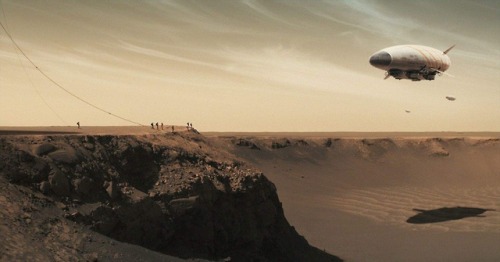
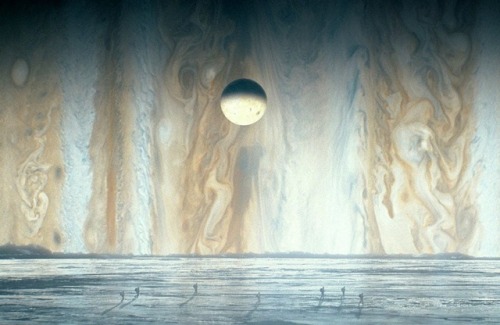

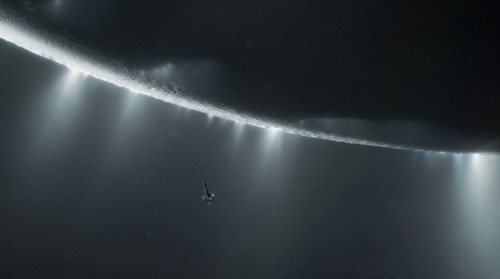
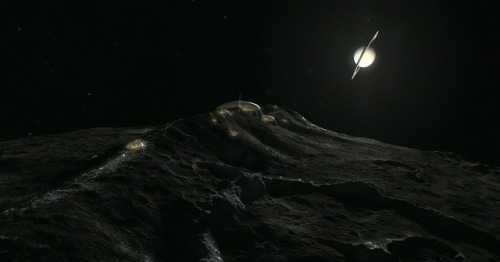
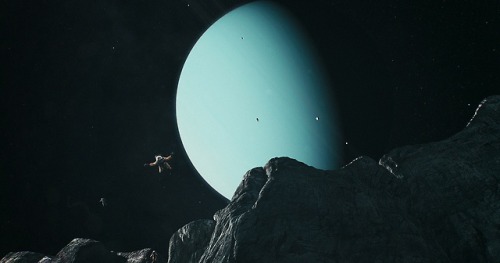
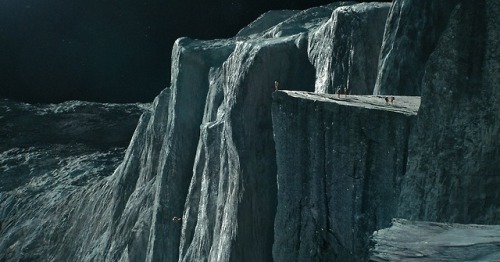

Will we one day explore the worlds of our solar system? How long will this take?
We have a diversity of worlds in our solar system. Majestic places…
Imagine being able to visit Mars and its hostile climate. Imagine being able to visit the moons of Jupiter, observe Io: the volcanic moon, Europa, the frozen moon and Ganymede a moon larger than Mercury itself and that has its own magnetic field. Imagine visiting the moons of Saturn and maybe passing close to your rings… Imagine orbiting or floating through Titan’s atmosphere and closely watching its lakes and seas of methane and liquid ethane. Imagine getting to know the geysers of Enceladus, the valleys of Tethys, and the craters of Mimas… Imagine being able to see the moons of Uranus and have a view of Verona Rupes, the largest cliff of the solar system, located in Miranda. Imagine being able to be in Triton and to be able to observe the cold and azualdo Neptune in the sky…









Will we one day explore the worlds of our solar system? How long will this take?
We have a diversity of worlds in our solar system. Majestic places…
Imagine being able to visit Mars and its hostile climate. Imagine being able to visit the moons of Jupiter, observe Io: the volcanic moon, Europa, the frozen moon and Ganymede a moon larger than Mercury itself and that has its own magnetic field. Imagine visiting the moons of Saturn and maybe passing close to your rings… Imagine orbiting or floating through Titan’s atmosphere and closely watching its lakes and seas of methane and liquid ethane. Imagine getting to know the geysers of Enceladus, the valleys of Tethys, and the craters of Mimas… Imagine being able to see the moons of Uranus and have a view of Verona Rupes, the largest cliff of the solar system, located in Miranda. Imagine being able to be in Triton and to be able to observe the cold and azualdo Neptune in the sky…
All Cats Are Beautiful




























In October 1980 the Voyager probe discovered three small moons of Saturn, Pandora, Atlas and Prometheus. (source & images)
World Teacher Appreciation Day!
On #WorldTeachersDay, we are recognizing our two current astronauts who are former classroom teachers, Joe Acaba and Ricky Arnold, as well as honoring teachers everywhere. What better way to celebrate than by learning from teachers who are literally out-of-this-world!
During the past Year of Education on Station, astronauts connected with more than 175,000 students and 40,000 teachers during live Q & A sessions.
Let’s take a look at some of the questions those students asked:
The view from space is supposed to be amazing. Is it really that great and could you explain?
Taking a look at our home planet from the International Space Station is one of the most fascinating things to see! The views and vistas are unforgettable, and you want to take everyone you know to the Cupola (window) to experience this. Want to see what the view is like? Check out earthkam to learn more.
What kind of experiments do you do in space?
There are several experiments that take place on a continuous basis aboard the orbiting laboratory - anything from combustion to life sciences to horticulture. Several organizations around the world have had the opportunity to test their experiments 250 miles off the surface of the Earth.
What is the most overlooked attribute of an astronaut?
If you are a good listener and follower, you can be successful on the space station. As you work with your team, you can rely on each other’s strengths to achieve a common goal. Each astronaut needs to have expeditionary skills to be successful. Check out some of those skills here.
Are you able to grow any plants on the International Space Station?
Nothing excites Serena Auñón-Chancellor more than seeing a living, green plant on the International Space Station. She can’t wait to use some of the lettuce harvest to top her next burger! Learn more about the plants that Serena sees on station here.
What food are you growing on the ISS and which tastes the best?
While aboard the International Space Station, taste buds may not react the same way as they do on earth but the astronauts have access to a variety of snacks and meals. They have also grown 12 variants of lettuce that they have had the opportunity to taste.
Learn more about Joe Acaba, Ricky Arnold, and the Year of Education on Station.
Make sure to follow us on Tumblr for your regular dose of space: http://nasa.tumblr.com.
Sixty Years of Exploration, Innovation, and Discovery!

Exactly sixty years ago today, we opened our doors for the first time. And since then, we have opened up a universe of discovery and innovation.
There are so many achievements to celebrate from the past six decades, there’s no way we can go through all of them. If you want to dive deeper into our history of exploration, check out NASA: 60 Years and Counting.
In the meantime, take a moonwalk down memory lane with us while we remember a few of our most important accomplishments from the past sixty years!

In 1958, President Eisenhower signed the National Aeronautics and Space Act, which effectively created our agency. We officially opened for business on October 1.
To learn more about the start of our space program, watch our video: How It All Began.

Alongside the U.S. Air Force, we implemented the X-15 hypersonic aircraft during the 1950s and 1960s to improve aircraft and spacecraft.
The X-15 is capable of speeds exceeding Mach 6 (4,500 mph) at altitudes of 67 miles, reaching the very edge of space.
Dubbed the “finest and most productive research aircraft ever seen,” the X-15 was officially retired on October 24, 1968. The information collected by the X-15 contributed to the development of the Mercury, Gemini, Apollo, and Space Shuttle programs.
To learn more about how we have revolutionized aeronautics, watch our Leading Edge of Flight video.

On July 20, 1969, Neil Armstrong and Buzz Aldrin became the first humans to walk on the moon. The crew of Apollo 11 had the distinction of completing the first return of soil and rock samples from beyond Earth.
Astronaut Gene Cernan, during Apollo 17, was the last person to have walked on the surface of the moon. (For now!)
The Lunar Roving Vehicle was a battery-powered rover that the astronauts used during the last three Apollo missions.
To learn more about other types of technology that we have either invented or improved, watch our video: Trailblazing Technology.

Our long-term Earth-observing satellite program began on July 23, 1972 with the launch of Landsat 1, the first in a long series (Landsat 9 is expected to launch in 2020!) We work directly with the U.S. Geological Survey to use Landsat to monitor and manage resources such as food, water, and forests.
Landsat data is one of many tools that help us observe in immense detail how our planet is changing. From algae blooms to melting glaciers to hurricane flooding, Landsat is there to help us understand our own planet better.
Off the Earth, for the Earth.
To learn more about how we contribute to the Earth sciences, watch our video: Home, Sweet Home.

Space Transportation System-1, or STS-1, was the first orbital spaceflight of our Space Shuttle program.
The first orbiter, Columbia, launched on April 12, 1981. Over the next thirty years, Challenger, Discovery, Atlantis, and Endeavour would be added to the space shuttle fleet.
Together, they flew 135 missions and carried 355 people into space using the first reusable spacecraft.

On January 16, 1978, we selected a class of 35 new astronauts–including the first women and African-American astronauts.
And on June 18, 1983, Sally Ride became the first American woman to enter space on board Challenger for STS-7.
To learn more about our astronauts, then and now, watch our Humans in Space video.

Everybody loves Hubble! The Hubble Space Telescope was launched into orbit on April 24, 1990, and has been blowing our minds ever since.
Hubble has not only captured stunning views of our distant stars and galaxies, but has also been there for once-in-a-lifetime cosmic events. For example, on January 6, 2010, Hubble captured what appeared to be a head-on collision between two asteroids–something no one has ever seen before.
In this image, Hubble captures the Carina Nebula illuminating a three-light-year tall pillar of gas and dust.
To learn more about how we have contributed to our understanding of the solar system and beyond, watch our video: What’s Out There?

Cooperation to build the International Space Station began in 1993 between the United States, Russia, Japan, and Canada.
The dream was fully realized on November 2, 2000, when Expedition 1 crew members boarded the station, signifying humanity’s permanent presence in space!
Although the orbiting lab was only a couple of modules then, it has grown tremendously since then!
To learn more about what’s happening on the orbiting outpost today, visit the Space Station page.

We have satellites in the sky, humans in orbit, and rovers on Mars. Very soon, we will be returning humankind to the Moon, and using it as a platform to travel to Mars and beyond.
And most importantly, we bring the universe to you.
What are your favorite NASA moments? We were only able to share a few of ours here, but if you want to learn about more important NASA milestones, check out 60 Moments in NASA History or our video, 60 Years in 60 Seconds.
Make sure to follow us on Tumblr for your regular dose of space: http://nasa.tumblr.com.
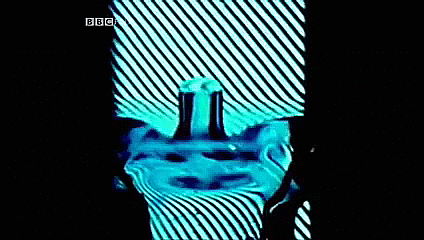
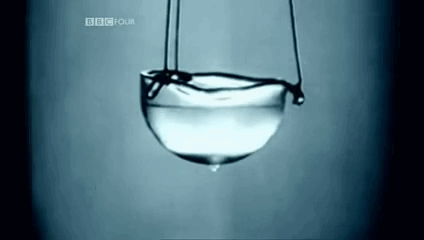
Superfluidity consists of an anomalous liquid state of quantum nature which is under a very low temperature behaving as if it had no viscosity and exhibiting an abnormally high heat transfer. This phenomenon was observed for the first time in liquid helium and has applications not only in theories about liquid helium but also in astrophysics and theories of quantum gravitation.
Helium only ends boiling at 2.2 K and is when it becomes helium-II (superfluid helium), getting a thermal conductivity increased by a million times, in addition to becoming a superconductor. Its viscosity tends to zero, hence, if the liquid were placed in a cubic container it would spread all over the surface. Thus, the liquid can flow upwards, up the walls of the container. If the viscosity is zero, the flexibility of the material is non-existent and the propagation of waves on the material occurs under infinite velocity.

Because it is a noble gas, helium exhibits little intermolecular interaction. The interactions that it presents are the interactions of Van der Waals. As the relative intensity of these forces is small, and the mass of the two isotopes of helium is small, the quantum effects, usually disguised under the thermal agitation, begin to appear, leaving the liquid in a state in which the particles behave jointly, under effect of a single wave function. In the two liquids in which cases of superfluidity are known, that is, in isotopes 3 and 4 of helium, the first is composed of fermions whereas the second is composed of bosons. In both cases, the explanation requires the existence of bosons. In the case of helium-3, the fermions group in pairs, similar to what happens in the superconductivity with the Cooper pairs, to form bosons.

Helium’s liquidity at low temperatures allows it to carry out a transformation called Bose–Einstein condensation, in which individual particles overlap until they behave like one big particle.
Superfluid in astrophysics
The idea of superfluids existed within neutron stars was proposed by Russian physicist Arkady Migdal in 1959. Making an analogy with Cooper pairs that form within superconductors, it is expected that protons and neutrons in the nucleus of a star of neutrons with sufficient high pressure and low temperature behave in a similar way forming pairs of Cooper and generate the phenomena of superfluidity and superconductivity.

The existence of this phenomenon was proven by NASA in 2011 when analyzing the neutron star left by supernova Cassiopeia A.
sources: 1, 2, 3 & 4 animation: 1 & 2
10 Steps to Confirm a Planet Around Another Star
So you think you found an exoplanet – a planet around another star? It’s not as simple as pointing a telescope to the sky and looking for a planet that waves back. Scientists gather many observations and carefully analyze their data before they can be even somewhat sure that they’ve discovered new worlds.
Here are 10 things to know about finding and confirming exoplanets.

This is an illustration of the different elements in our exoplanet program, including ground-based observatories, like the W. M. Keck Observatory, and space-based observatories like Hubble, Spitzer, Kepler, TESS, James Webb Space Telescope, WFIRST and future missions.
1. Pick your tool to take a look.
The vast majority of planets around other stars have been found through the transit method so far. This technique involves monitoring the amount of light that a star gives off over time, and looking for dips in brightness that may indicate an orbiting planet passing in front of the star.
We have two specialized exoplanet-hunting telescopes scanning the sky for new planets right now – Kepler and the Transiting Exoplanet Survey Satellite (TESS) – and they both work this way. Other methods of finding exoplanets include radial velocity (looking for a “wobble” in a star’s position caused by a planet’s gravity), direct imaging (blocking the light of the star to see the planet) and microlensing (watching for events where a star passes in front of another star, and the gravity of the first star acts as a lens).
Here’s more about finding exoplanets.

2. Get the data.
To find a planet, scientists need to get data from telescopes, whether those telescopes are in space or on the ground. But telescopes don’t capture photos of planets with nametags. Instead, telescopes designed for the transit method show us how brightly thousands of stars are shining over time. TESS, which launched in April and just began collecting science data, beams its stellar observations back to Earth through our Deep Space Network, and then scientists get to work.

3. Scan the data for planets.
Researchers combing through TESS data are looking for those transit events that could indicate planets around other stars. If the star’s light lessens by the same amount on a regular basis – for example, every 10 days – this may indicate a planet with an orbital period (or “year”) of 10 days. The standard requirement for planet candidates from TESS is at least two transits – that is, two equal dips in brightness from the same star.

4. Make sure the planet signature couldn’t be something else.
Not all dips in a star’s brightness are caused by transiting planets. There may be another object – such as a companion star, a group of asteroids, a cloud of dust or a failed star called a brown dwarf, that makes a regular trip around the target star. There could also be something funky going on with the telescope’s behavior, how it delivered the data, or other “artifacts” in data that just aren’t planets. Scientists must rule out all non-planet options to the best of their ability before moving forward.

5. Follow up with a second detection method.
Finding the same planet candidate using two different techniques is a strong sign that the planet exists, and is the standard for “confirming” a planet. That’s why a vast network of ground-based telescopes will be looking for the same planet candidates that TESS discovers. It is also possible that TESS will spot a planet candidate already detected by another telescope in the past. With these combined observations, the planet could then be confirmed. The first planet TESS discovered, Pi Mensae c, orbits a star previously observed with the radial-velocity method on the ground. Scientists compared the TESS data and the radial-velocity data from that star to confirm the presence of planet “c.”
Scientists using the radial-velocity detection method see a star’s wobble caused by a planet’s gravity, and can rule out other kinds of objects such as companion stars. Radial-velocity detection also allows scientists to calculate the mass of the planet.

6. …or at least another telescope.
Other space telescopes may also be used to help confirm exoplanets, characterize them and even discover additional planets around the same stars. If the planet is detected by the same method, but by two different telescopes, and has received enough scrutiny that the scientists are more than 99 percent sure it’s a planet, it is said to be “validated” instead of “confirmed.”

7. Write a paper.
After thoroughly analyzing the data, and running tests to make sure that their result still looks like the signature of a planet, scientists write a formal paper describing their findings. Using the transit method, they can also report the size of the planet. The planet’s radius is related to how much light it blocks from the star, as well as the size of the star itself. The scientists then submit the study to a journal.

8. Wait for peer review.
Scientific journals have a rigorous peer review process. This means scientific experts not involved in the study review it and make sure the findings look sound. The peer-reviewers may have questions or suggestions for the scientists. When everyone agrees on a version of the study, it gets published.
9. Publish the study.
When the study is published, scientists can officially say they have found a new planet. This may still not be the end of the story, however. For example, the TRAPPIST telescope in Chile first thought they had discovered three Earth-size planets in the TRAPPIST-1 system. When our Spitzer Space Telescope and other ground-based telescopes followed up, they found that one of the original reported planets (the original TRAPPIST-1d) did not exist, but they discovered five others –bringing the total up to seven wondrous rocky worlds.

10. Catalog and celebrate – and look closer if you can!
Confirmed planets get added to our official catalog. So far, Kepler has sent back the biggest bounty of confirmed exoplanets of any telescope – more than 2,600 to date. TESS, which just began its planet search, is expected to discover many thousands more. Ground-based follow-up will help determine if these planets are gaseous or rocky, and possibly more about their atmospheres. The forthcoming James Webb Space Telescope will be able to take a deeper look at the atmospheres of the most interesting TESS discoveries.
Scientists sometimes even uncover planets with the help of people like you: exoplanet K2-138 was discovered through citizen scientists in Kepler’s K2 mission data. Based on surveys so far, scientists calculate that almost every star in the Milky Way should have at least one planet. That makes billions more, waiting to be found! Stay up to date with our latest discoveries using this exoplanet counter.
Make sure to follow us on Tumblr for your regular dose of space: http://nasa.tumblr.com.
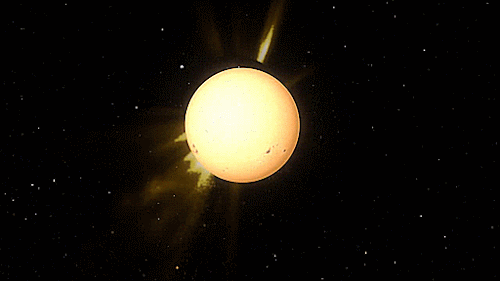


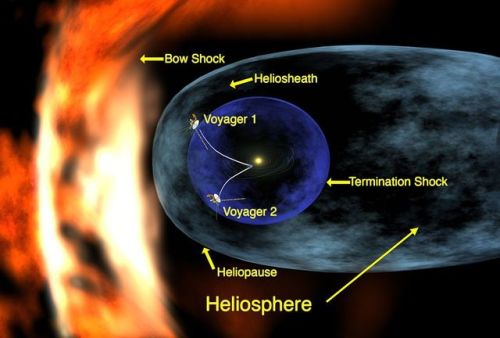
The heliosphere is the bubble-like region of space dominated by the Sun, which extends far beyond the orbit of Pluto. Plasma “blown” out from the Sun, known as the solar wind, creates and maintains this bubble against the outside pressure of the interstellar medium, the hydrogen and helium gas that permeates the Milky Way Galaxy. The solar wind flows outward from the Sun until encountering the termination shock, where motion slows abruptly. The Voyager spacecraft have explored the outer reaches of the heliosphere, passing through the shock and entering the heliosheath, a transitional region which is in turn bounded by the outermost edge of the heliosphere, called the heliopause. The shape of the heliosphere is controlled by the interstellar medium through which it is traveling, as well as the Sun and is not perfectly spherical. The limited data available and unexplored nature of these structures have resulted in many theories. The word “heliosphere” is said to have been coined by Alexander J. Dessler, who is credited with first use of the word in the scientific literature.
On September 12, 2013, NASA announced that Voyager 1 left the heliopause on August 25, 2012, when it measured a sudden increase in plasma density of about forty times. Because the heliopause marks one boundary between the Sun’s solar wind and the rest of the galaxy, a spacecraft such as Voyager 1 which has departed the heliosphere, can be said to have reached interstellar space. source
Ten interesting facts about Saturn
Saturn is sometimes called “The Jewel of the Solar System.” It is a planet that is nothing like our own. Humans have been gazing up at Saturn for a long time. They have been wondering about it for thousands of years.
Here are some fun facts about the Ringed Planet.

Saturn is huge. It is the second largest planet in our Solar System. Jupiter is the only planet that is bigger.

The rings are huge but thin. The main rings could almost go from Earth to the moon. Yet, they are less than a kilometer thick.

Four spacecraft have visited Saturn: Pioneer 11, Voyager 1 and 2, and the Cassini-Huygens mission have all studied the planet.

Saturn has oval-shaped storms similar to Jupiter’s: The region around its north pole has a hexagonal-shaped pattern of clouds. Scientists think this may be a wave pattern in the upper clouds. The planet also has a vortex over its south pole that resembles a hurricane-like storm.

Saturn is made mostly of hydrogen and helium: It exists in layers that get denser farther into the planet. Eventually, deep inside, the hydrogen becomes metallic. At the core lies a hot interior. (click the image for a better resolution).

Saturn has 62 moons: Some of these are large, like Titan, the second largest moon in the Solar System. But most are tiny – just a few km across, and they have no official names. In fact, the last few were discovered by NASA’s Cassini orbiter just a few years ago. More will probably be discovered in the coming years.

Saturn orbits the Sun once every 29.4 Earth years: Its slow movement against the backdrop of stars earned it the nickname of “Lubadsagush” from the ancient Assyrians. The name means “oldest of the old”.

In Saturn there is aurora: Photographic composition made by the Hubble Space Telescope showing the occurrence of aurora in the southern hemisphere of Saturn at intervals of two days.The aurora is visible only in the ultraviolet.

Saturn spins on its axis very fast. A day on Saturn is 10 hours and 14 minutes.

You can see Saturn with your own eyes: Saturn appears as one of the 5 planets visible with the unaided eye. If Saturn is in the sky at night, you can head outside and see it. To see the rings and the ball of the planet itself, you’ll want to peer through a telescope. But you can amaze your friends and family by pointing out that bright star in the sky, and let them know they’re looking at Saturn.
sources: nasa.gov, universetoday.com and solarsystem.nasa.gov
NASA’s New Planet Hunter Reveals a Sky Full of Stars

NASA’s newest planet-hunting satellite — the Transiting Exoplanet Survey Satellite, or TESS for short — has just released its first science image using all of its cameras to capture a huge swath of the sky! TESS is NASA’s next step in the search for planets outside our solar system, called exoplanets.

This spectacular image, the first released using all four of TESS’ cameras, shows the satellite’s full field of view. It captures parts of a dozen constellations, from Capricornus (the Sea Goat) to Pictor (the Painter’s Easel) — though it might be hard to find familiar constellations among all these stars! The image even includes the Large and Small Magellanic Clouds, our galaxy’s two largest companion galaxies.
The science community calls this image “first light,” but don’t let that fool you — TESS has been seeing light since it launched in April. A first light image like this is released to show off the first science-quality image taken after a mission starts collecting science data, highlighting a spacecraft’s capabilities.

TESS has been busy since it launched from NASA’s Kennedy Space Center in Cape Canaveral, Florida. First TESS needed to get into position, which required a push from the Moon. After nearly a month in space, the satellite passed about 5,000 miles from the Moon, whose gravity gave it the boost it needed to get into a special orbit that will keep it stable and maximize its view of the sky.

During those first few weeks, we also got a sneak peek of the sky through one of TESS’s four cameras. This test image captured over 200,000 stars in just two seconds! The spacecraft was pointed toward the constellation Centaurus when it snapped this picture. The bright star Beta Centauri is visible at the lower left edge, and the edge of the Coalsack Nebula is in the right upper corner.

After settling into orbit, scientists ran a number of checks on TESS, including testing its ability to collect a set of stable images over a prolonged period of time. TESS not only proved its ability to perform this task, it also got a surprise! A comet named C/2018 N1 passed through TESS’s cameras for about 17 hours in July.
The images show a treasure trove of cosmic curiosities. There are some stars whose brightness changes over time and asteroids visible as small moving white dots. You can even see an arc of stray light from Mars, which is located outside the image, moving across the screen.

Now that TESS has settled into orbit and has been thoroughly tested, it’s digging into its main mission of finding planets around other stars. How will it spot something as tiny and faint as a planet trillions of miles away? The trick is to look at the star!
So far, most of the exoplanets we’ve found were detected by looking for tiny dips in the brightness of their host stars. These dips are caused by the planet passing between us and its star – an event called a transit. Over its first two years, TESS will stare at 200,000 of the nearest and brightest stars in the sky to look for transits to identify stars with planets.

TESS will be building on the legacy of NASA’s Kepler spacecraft, which also used transits to find exoplanets. TESS’s target stars are about 10 times closer than Kepler’s, so they’ll tend to be brighter. Because they’re closer and brighter, TESS’s target stars will be ideal candidates for follow-up studies with current and future observatories.

TESS is challenging over 200,000 of our stellar neighbors to a staring contest! Who knows what new amazing planets we’ll find?
The TESS mission is led by MIT and came together with the help of many different partners. You can keep up with the latest from the TESS mission by following mission updates.
Make sure to follow us on Tumblr for your regular dose of space: http://nasa.tumblr.com.
Google Classroom FINALLY lets you add a “Materials” section under “Classwork”
Literally two days ago they added the ability to add a new kind of post under a Classwork topic. “Materials” (instead of Assignment or Question)
This is your workaround for losing the “About” page. Set up a topic called “About” or “Resources”, then add a “Materials” post under that topic. Boom, done!

ALSO, if you created a Google Classroom before the update, and only have the Stream and People pages, you can now manually add a Classwork page by clicking the grey question mark in the bottom left corner, then selecting “Add Classwork page”.

Try it out, today!
Your Friendly Neighborhood Google for Education Certified Trainer,
-WCT

Earth as viewed from 10,000 miles. In 1969, the Apollo 4 unmanned test flight made a great ellipse around Earth as a test of the translunar motors and of the high speed entry required of a manned flight returning from the moon. A 70mm camera was programmed to look out a window toward Earth, and take a series of photographs from “high apogee”. Coastal Brazil, Atlantic Ocean, West Africa, Antarctica, looking west. This photograph was made when the Apollo 4 spacecraft, still attached to the S-IVB (third) stage, was orbiting Earth at an altitude of 9,544 miles. source

cosmic microwave background
The cosmic microwave background (CMB) is electromagnetic radiation as a remnant from an early stage of the universe in Big Bang cosmology. In older literature, the CMB is also variously known as cosmic microwave background radiation (CMBR) or “relic radiation”. The CMB is a faint cosmic background radiation filling all space that is an important source of data on the early universe because it is the oldest electromagnetic radiation in the universe, dating to the epoch of recombination.
With a traditional optical telescope, the space between stars and galaxies (the background) is completely dark. However, a sufficiently sensitive radio telescope shows a faint background noise, or glow, almost isotropic, that is not associated with any star, galaxy, or other object. This glow is strongest in the microwave region of the radio spectrum. The accidental discovery of the CMB in 1964 by American radio astronomers Arno Penzias and Robert Wilson was the culmination of work initiated in the 1940s, and earned the discoverers the 1978 Nobel Prize in Physics.

The discovery of CMB is landmark evidence of the Big Bang origin of the universe. When the universe was young, before the formation of stars and planets, it was denser, much hotter, and filled with a uniform glow from a white-hot fog of hydrogen plasma. As the universe expanded, both the plasma and the radiation filling it grew cooler. When the universe cooled enough, protons and electrons combined to form neutral hydrogen atoms. Unlike the uncombined protons and electrons, these newly conceived atoms could not absorb the thermal radiation, and so the universe became transparent instead of being an opaque fog. Cosmologists refer to the time period when neutral atoms first formed as the recombination epoch, and the event shortly afterwards when photons started to travel freely through space rather than constantly being scattered by electrons and protons in plasma is referred to as photon decoupling.

Basically, cosmic microwave background radiation is the fossil of light, resulting from a time when the Universe was hot and dense, only 380,000 years after the Big Bang.
Cosmic microwave background radiation is an electromagnetic radiation that fills the entire universe, whose spectrum is that of a blackbody at a temperature of 2.725 kelvin.

Cosmic microwave background radiation, along with the spacing from galaxies and the abundance of light elements, is one of the strongest observational evidences of the Big Bang model, which describes the evolution of the universe. Penzias and Wilson received the Nobel Prize in Physics in 1978 for this discovery
source, source in portuguese
images credit: Image credit: Institute of Astronomy / National Tsing Hua University/ NASA/ESA Hubble, wikipedia
Hostile and Closed Environments, Hazards at Close Quarters
A human journey to Mars, at first glance, offers an inexhaustible amount of complexities. To bring a mission to the Red Planet from fiction to fact, NASA’s Human Research Program has organized some of the hazards astronauts will encounter on a continual basis into five classifications.

A spacecraft is not only a home, it’s also a machine. NASA understands that the ecosystem inside a vehicle plays a big role in everyday astronaut life.

Important habitability factors include temperature, pressure, lighting, noise, and quantity of space. It’s essential that astronauts are getting the requisite food, sleep and exercise needed to stay healthy and happy. The space environment introduces challenges not faced on Earth.

Technology, as often is the case with out-of-this-world exploration, comes to the rescue! Technology plays a big role in creating a habitable home in a harsh environment and monitoring some of the environmental conditions.

Astronauts are also asked to provide feedback about their living environment, including physical impressions and sensations so that the evolution of spacecraft can continue addressing the needs of humans in space.


Exploration to the Moon and Mars will expose astronauts to five known hazards of spaceflight, including hostile and closed environments, like the closed environment of the vehicle itself. To learn more, and find out what NASA’s Human Research Program is doing to protect humans in space, check out the “Hazards of Human Spaceflight“ website. Or, check out this week’s episode of “Houston We Have a Podcast,” in which host Gary Jordan further dives into the threat of hostile and closed environments with Brian Crucian, NASA immunologist at the Johnson Space Center.

Make sure to follow us on Tumblr for your regular dose of space: http://nasa.tumblr.com.


HiPOD (31 August 2018) Dunes in South Xainza Crater
– They look so innocent… (270 km above the surface. Black and white is less than 5 km across; enhanced color is less than 1 km.)
NASA/JPL/University of Arizona
What’s Up For September 2018?
Outstanding views Venus, Jupiter, Saturn and Mars with the naked eye!

You’ll have to look quickly after sunset to catch Venus. And through binoculars or a telescope, you’ll see Venus’s phase change dramatically during September - from nearly half phase to a larger thinner crescent!

Jupiter, Saturn and Mars continue their brilliant appearances this month. Look southwest after sunset.

Use the summer constellations help you trace the Milky Way.

Sagittarius: where stars and some brighter clumps appear as steam from the teapot.

Aquila: where the Eagle’s bright Star Altair, combined with Cygnus’s Deneb, and Lyra’s Vega mark the Summer Triangle.

Cassiopeia, the familiar “w”- shaped constellation completes the constellation trail through the Summer Milky Way. Binoculars will reveal double stars, clusters and nebulae.

Between September 12th and the 20th, watch the Moon pass from near Venus, above Jupiter, to the left of Saturn and finally above Mars!

Both Neptune and brighter Uranus can be spotted with some help from a telescope this month.

Look at about 1:00 a.m. local time or later in the southeastern sky. You can find Mercury just above Earth’s eastern horizon shortly before sunrise. Use the Moon as your guide on September 7 and 8th.

And although there are no major meteor showers in September, cometary dust appears in another late summer sight, the morning Zodiacal light. Try looking for it in the east on moonless mornings very close to sunrise. To learn more about the Zodiacal light, watch “What’s Up” from March 2018.

Watch the full What’s Up for September Video:
There are so many sights to see in the sky. To stay informed, subscribe to our What’s Up video series on Facebook.
Make sure to follow us on Tumblr for your regular dose of space: http://nasa.tumblr.com

Pulsar planets are planets that are found orbiting pulsars, or rapidly rotating neutron stars. The first such planet to be discovered was around a millisecond pulsar and was the first extrasolar planet to be confirmed as discovered.
source



Black Holes are NICER Than You Think!
We’re learning more every day about black holes thanks to one of the instruments aboard the International Space Station! Our Neutron star Interior Composition Explorer (NICER) instrument is keeping an eye on some of the most mysterious cosmic phenomena.

We’re going to talk about some of the amazing new things NICER is showing us about black holes. But first, let’s talk about black holes — how do they work, and where do they come from? There are two important types of black holes we’ll talk about here: stellar and supermassive. Stellar mass black holes are three to dozens of times as massive as our Sun while supermassive black holes can be billions of times as massive!

Stellar black holes begin with a bang — literally! They are one of the possible objects left over after a large star dies in a supernova explosion. Scientists think there are as many as a billion stellar mass black holes in our Milky Way galaxy alone!
Supermassive black holes have remained rather mysterious in comparison. Data suggest that supermassive black holes could be created when multiple black holes merge and make a bigger one. Or that these black holes formed during the early stages of galaxy formation, born when massive clouds of gas collapsed billions of years ago. There is very strong evidence that a supermassive black hole lies at the center of all large galaxies, as in our Milky Way.

Imagine an object 10 times more massive than the Sun squeezed into a sphere approximately the diameter of New York City — or cramming a billion trillion people into a car! These two examples give a sense of how incredibly compact and dense black holes can be.
Because so much stuff is squished into such a relatively small volume, a black hole’s gravity is strong enough that nothing — not even light — can escape from it. But if light can’t escape a dark fate when it encounters a black hole, how can we “see” black holes?

Scientists can’t observe black holes directly, because light can’t escape to bring us information about what’s going on inside them. Instead, they detect the presence of black holes indirectly — by looking for their effects on the cosmic objects around them. We see stars orbiting something massive but invisible to our telescopes, or even disappearing entirely!
When a star approaches a black hole’s event horizon — the point of no return — it’s torn apart. A technical term for this is “spaghettification” — we’re not kidding! Cosmic objects that go through the process of spaghettification become vertically stretched and horizontally compressed into thin, long shapes like noodles.

Scientists can also look for accretion disks when searching for black holes. These disks are relatively flat sheets of gas and dust that surround a cosmic object such as a star or black hole. The material in the disk swirls around and around, until it falls into the black hole. And because of the friction created by the constant movement, the material becomes super hot and emits light, including X-rays.
At last — light! Different wavelengths of light coming from accretion disks are something we can see with our instruments. This reveals important information about black holes, even though we can’t see them directly.

So what has NICER helped us learn about black holes? One of the objects this instrument has studied during its time aboard the International Space Station is the ever-so-forgettably-named black hole GRS 1915+105, which lies nearly 36,000 light-years — or 200 million billion miles — away, in the direction of the constellation Aquila.
Scientists have found disk winds — fast streams of gas created by heat or pressure — near this black hole. Disk winds are pretty peculiar, and we still have a lot of questions about them. Where do they come from? And do they change the shape of the accretion disk?

It’s been difficult to answer these questions, but NICER is more sensitive than previous missions designed to return similar science data. Plus NICER often looks at GRS 1915+105 so it can see changes over time.
NICER’s observations of GRS 1915+105 have provided astronomers a prime example of disk wind patterns, allowing scientists to construct models that can help us better understand how accretion disks and their outflows around black holes work.

NICER has also collected data on a stellar mass black hole with another long name — MAXI J1535-571 (we can call it J1535 for short) — adding to information provided by NuSTAR, Chandra, and MAXI. Even though these are all X-ray detectors, their observations tell us something slightly different about J1535, complementing each other’s data!
This rapidly spinning black hole is part of a binary system, slurping material off its partner, a star. A thin halo of hot gas above the disk illuminates the accretion disk and causes it to glow in X-ray light, which reveals still more information about the shape, temperature, and even the chemical content of the disk. And it turns out that J1535’s disk may be warped!

Image courtesy of NRAO/AUI and Artist: John Kagaya (Hoshi No Techou)
This isn’t the first time we have seen evidence for a warped disk, but J1535’s disk can help us learn more about stellar black holes in binary systems, such as how they feed off their companions and how the accretion disks around black holes are structured.
NICER primarily studies neutron stars — it’s in the name! These are lighter-weight relatives of black holes that can be formed when stars explode. But NICER is also changing what we know about many types of X-ray sources. Thanks to NICER’s efforts, we are one step closer to a complete picture of black holes. And hey, that’s pretty nice!
Make sure to follow us on Tumblr for your regular dose of space: http://nasa.tumblr.com.